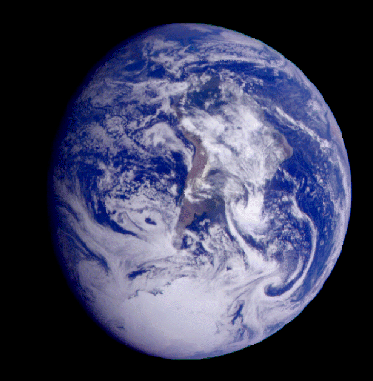 |
| Earth |
| Earth - An oasis in space As viewed from space, Earth is like a sparkling blue oasis suspended in s black sea. Constantly changing weather patterns create the swirls of clouds that blanket the blue and brown sphere we call home. Why did earth have such good fortune while its two nearest neighbors, Venus and Mars, are unsuitable for life? Earth is fortunate enough to have formed at just the right distance from the sun. The temperatures are warm enough to prevent most of its water from freezing but cool enough to keep it from boiling away. Liquid water was the key to the development of life on earth. Water provides a means for much of the chemistry that living thins depend on for survival |
 |
| Earth Statistics Distance from sun: 1AU (8.3 light-mintues) Period of rotation: 23 earth hours, 56 earth mintues Period of revolution: 365 earth days, 6 earth hours Diameter: 12, 756 Km Density 5.52 g/cm cube Surface temperature: -13 to 37 Degree C. Surface gravity: 100% of earth's |
| Eath is the biggest planet of the terrest planet group. |
| Also it's the only planet that consists mostly life in the solar system |
| Luna: the moon of earth |
 |
| We know that earth’s moon – also called Luna – has a different composition from the earth because its density is much less than earth’s. This tells us that the moon has a lower percentage of heavy elements than the earth has. The composition of lunar rocks brought back by Apollo astronauts suggests that the overall composition of the moon is similar to that of the earth’s mantle. |
| Surface of the moon |
| The explorations of the moon’s surface by the Apollo astronauts have given us insights about other planets and moons of the solar system. For example, the ages of lunar rocks brought back during the Apollo missions of the 1960s and 1970s were measured using radiometric dating techniques. The oldest lunar rocks were found to be about 4.6 billion years old. Because these rocks have hardly changed since they formed, we know the solar system itself is about 4.6 billion years old. |
 |